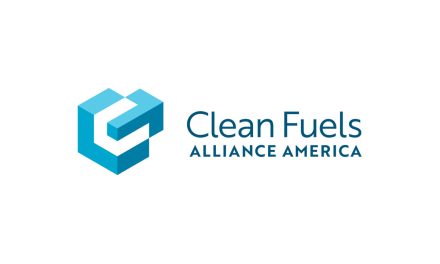Growth in Total Oil Inventory Slams WTI Crude Oil Price
- WTI crude oil price lowest since December 2003
- Cushing OK crude oil stocks gain new record
- Gasoline supplies increase 12 million barrels during week
- Natural gas rally probably short covering, not new buying
Sincerely, Alan Levine Chairman, Powerhouse

Table covers crude oil and principal products. Other products, including residual fuel oil and “other oils” are not shown, and changes in the stocks of these products are reflected in “Total Petroleum Products.” Statistics Source: Energy Information Administration “Weekly Petroleum Status Report” available at www.eia.doe.gov
The Matrix
A five million barrel reduction in American crude oil supplies was not enough to support prices in the first full week of 2016. The drop in crude oil stocks appeared in the Petroleum Balance Sheet for the week January 1, 2016.
Product prices reacted bearishly to substantial gains in inventories. Gasoline stocks rose 10.6 million barrels. Gains were realized in every PADD, probably reflecting seasonal post-Christmas declines in demand. EIA notes that this time of year tends to feature weak gasoline; demand was 8.2 million barrels per day, the lowest reported since February, 2014. It was also a thirteen per cent drop from the prior week, the largest one-week drop recorded.
Notwithstanding its size, the increase in gasoline inventories was seen as unusual, not game-changing. In addition to typically low post-holiday driving, traders have pointed to floods in the Midwest. High water in the region has closed some wholesale depots, stranding some supply. Moreover, year-end inventory adjustments may still have had to be made.
More bullish gasoline factors remain in play. Gasoline blend-stocks, RBOB and CBOB, were withheld from production at an unusually high pace. The expectation that refinery runs will decline as winter proceeds remains in play and should continue to support the gasoline crack spread this year.
Events elsewhere added to the downward pressure on prices. In particular, financial markets in China suffered a major hit as investors reacted to anxiety about the country’s currency and the health of its economy. Another hit came about as North Korea announced it had tested a hydrogen bomb. Its claim has since been doubted, but the effect on markets was bearish.
Petroleum prices reacted negatively, and WTI crude oil hit a twelve-year low. But some caution may be in order. Despite the weakness in price, the velocity of change was not notably strong. And open interest for crude oil has spiked in recent days. Since the start of the New Year, the number of new WTI crude oil contracts grew five per cent. This is bearish when taken with weaker prices and higher volume.
On the other hand, some technical indicators are suggesting a price bottom may be developing. And so many new shorts leave the market exposed to a short covering rally. Powerhouse is not calling a bottom in the crude oil market. Fundamentals remain very soft. But it would be unwise to disregard the factors militating for a price recovery. Major resistance is found at $38.00.
Supply/Demand Balances
Supply/demand data in the United States for the week ending January 01, 2016 were released by the Energy Information Administration.
Total commercial stocks of petroleum increased 7.3 million net barrels during the week ending January 1, 2015.
Builds were reported in stocks of RBOB, fuel ethanol, and distillates. Draws were reported in stocks of K-jet fuel, residual fuel oil, propane, and other oils.
Crude oil supplies in the United States decreased to 482.3 million barrels, a draw of 5.1 million barrels.
Crude oil supplies increased in two of the five PAD Districts. PADD 1 (East Coast) crude oil stocks increased 1.2 million barrels and PADD 4 (Rockies) rose 0.2 million barrels. PADD 2 (Midwest) crude oil stocks declined 0.9 million barrels, PADD 3 (Gulf Coast) fell 4.9 million barrels, and PADD 5 (West Coast) stocks experienced a draw of 0.7 million barrels.
Cushing, Oklahoma inventories increased 0.9 million barrels to 63.9 million barrels. This was the second consecutive record high at that location.
Domestic crude oil production increased 17,000 barrels daily to 9.219 million barrels per day.
Crude oil imports averaged 7.510 million barrels per day, a daily decrease of 382,000 barrels.
Refineries used 92.5 per cent of capacity, a decrease of 0.1 percentage points from the previous report week.
Crude oil inputs to refineries increased 65,000 barrels daily; there were 16.617 million barrels per day of crude oil run to facilities. Gross inputs, which include blending stocks, fell 25,000 barrels to 16.760 million barrels daily.
Total petroleum product inventories saw an increase of 12.4 million barrels from the previous report week.
Gasoline stocks increased 10.6 million barrels; total stocks are 232.0 million barrels. Demand for gasoline decreased 1.237 million barrels per day to 8.159 million barrels daily. The large build in gasoline stocks and sharp drop in demand may be a reflection of decreased blending at terminals and refineries, which reduced the amount of finished gasoline supplied. The EIA noted this unusually large seasonal blending anomaly in an e-mail to Reuters.
Total product demand decreased 2.182 million barrels daily to 18.296 million barrels per day.
Distillate fuel oil supply increased 6.3 million barrels. National demand was reported at 3.034 million barrels per day during the report week. This was a weekly decrease of 599,000 barrels daily.
Propane stocks decreased 1.4 million barrels to 96.3 million barrels. Current demand is estimated at 1.280 million barrels per day, an increase of 246,000 barrels daily from the previous report week.
Natural Gas
According to the EIA:
Working gas in storage was 3,643 Bcf as of Friday, January 1, 2016, according to EIA estimates. This represents a net decline of 113 Bcf from the previous week. Stocks were 535 Bcf higher than last year at this time and 464 Bcf above the five-year average of 3,179 Bcf. At 3,643 Bcf, total working gas is above the five-year historical range.
The withdrawal was slightly higher than industry expectations and led to a modest advance in natural gas prices. Prices have moved up from lows of $1.684 on December 18, 2015 and have stalled at recent highs, around $2.38.
Most of the factors that constrained prices last year remain in play. Bearish elements that may develop greater importance this year include higher pipeline capacity in the Northeast. Even with a slowdown in drilling, supply could grow by 2.4 Bcf according to some analysts.
Higher prices for natural gas came about on lowering open interest, suggesting the rally represented short covering. Open interest fell around seven per cent since futures prices bottomed. This does not bode well for a continued move higher absent colder weather in the weeks ahead. Next resistance can be found at $2.52.
Futures trading involves significant risk and is not suitable for everyone. Transactions in securities futures, commodity and index futures and options on future markets carry a high degree of risk. The amount of initial margin is small relative to the value of the futures contract, meaning that transactions are heavily “leveraged”. A relatively small market movement will have a proportionately larger impact on the funds you have deposited or will have to deposit: this may work against you as well as for you. You may sustain a total loss of initial margin funds and any additional funds deposited with the clearing firm to maintain your position. If the market moves against your position or margin levels are increased, you may be called upon to pay substantial additional funds on short notice to maintain your position. If you fail to comply with a request for additional funds within the time prescribed, your position may be liquidated at a loss and you will be liable for any resulting deficit. Past performance may not be indicative of future results. This is not an offer to invest in any investment program.
Powerhouse is a registered affiliate of Coquest, Inc.
Was this memo helpful? We’d like your feedback.
Please respond to [email protected]
or call: 202 333-5380
Copyright © 2016 Powerhouse, All rights reserved.













